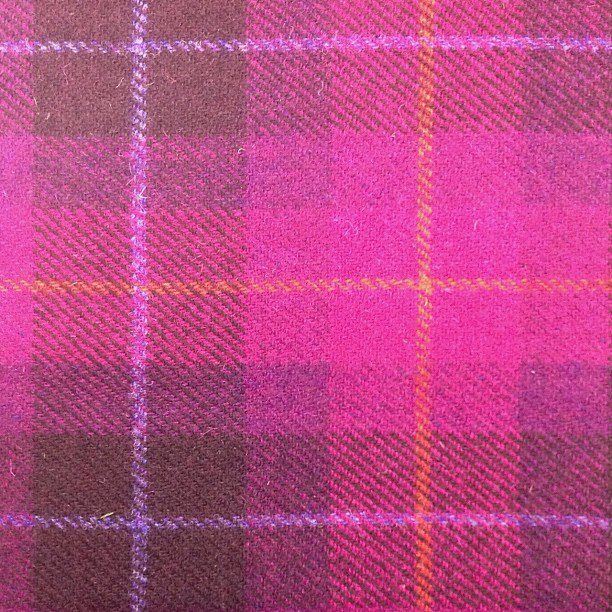Back in 2005, Vogue Knitting published a scarf pattern by designer Annie Modesitt with a clever construction that really gives the look of a tartan plaid. I just repeated the design four times across to make my throw.
Tartan plaids are made with a twill weave, so you see the two colors crossing each other in little diagonal stripes - Here's an example of a twill-weave plaid from Wikipedia -

Annie's knitted version gives dots of knit stitches instead of diagonals, but the mix of colors works like the woven plaid. (My closeup photo to show the knitting is upside down.)
Annie's method involves knitting the odd rows across in intarsia columns - with my 5 colors in 4 repeats, that's 20 ends of yarn. I tried using large bobbins which was a failure - documented in my Ravelry project file. In the end I used embroidery floss bobbins and had to work in a lot of ends since you can't put a lot of worsted weight wool on a bobbin designed for thread. (I wove them in as I went.) This is what the back of the knitting looked like with the bobbins across the top.
The horizontal stripes are worked by knitting each even row in the same direction as the previous odd row using just one color for those rows, alternating between knit and slipped stitches.
When this project came off the knitting needles, it was curled up and lumpy, but that didn't stop Lu from testing it out as soon as I spread it on the floor to have a look.
Here are a couple more photos of the throw, on the bed in the guest room which is what I made it for.
The gray yarn I used has a hint of metallic sparkle that doesn't show in my photos. The other yarns are plain wool.
Although this took only about two and half months from start to finish, I'm glad to move on to smaller projects for a change.










